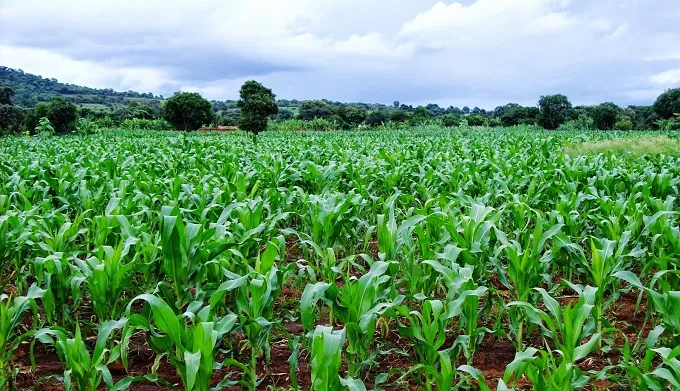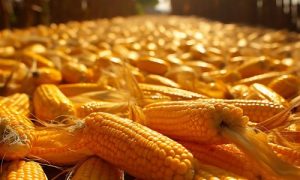Seed Corn Crop Facing Wide Variability

The USDA’s July 29 Crop Progress Report reveals that over 60% of the top 18 U.S. corn-producing states are in the silking stage. Despite this, only 16% of these states rate their corn crop as excellent, while 52% consider it good, and over 30% are fair to very poor. Kentucky exemplifies this contrast: Western areas are thriving with favorable conditions, while Eastern regions suffer severe drought stress, impacting yields. Nationally, varying weather conditions and innovations in agriculture are shaping the outlook for the corn harvest.
The U.S. Department of Agriculture’s Crop Progress Report through July 29 showed that more than 60% of the top 18-corn producing states are in the silking stage.
Those 18 states host more than 92% of the nation’s corn acreage. That doesn’t tell the whole story, though. Only 16% of those states list the corn crop as excellent, while 52% list it as good. More than 30% are fair to very poor.
Vastly different weather conditions are complicating the picture. One of those 18 states where that is especially true is Kentucky. Chad Lee is the director of the Forage and Grain Center of Excellence at the University of Kentucky Martin-Gatton College of Agriculture, Food and Environment.
He said in Western Kentucky, from the Mississippi River stretching eastward to Leitchfield, the corn crop is thriving.
“Corn in Kentucky is at two very different places,” he says. “Most of the fields from the Mississippi River to Leitchfield are in excellent condition. The crop is expected to be excellent.”
This region has benefited from favorable weather conditions, resulting in robust plant growth and promising yield prospects.
Farmers in these areas have witnessed optimal rainfall and temperatures, allowing the corn plants to reach their full potential. The well-timed rains and lack of extreme weather events have set the stage for what could be one of the best harvests in recent years. The fields are lush, with tall, sturdy stalks and well-formed ears of corn, indicating a high-quality crop that will likely command good prices on the market.
Challenges in the East
However, moving toward the eastern part of the state and southward from Shelbyville to London, the narrative dramatically shifts.
“From Leitchfield to Winchester and from Shelbyville to London, the corn crop has been under drought stress,” Lee explains. “In some cases, drought stress has been severe. Some of the fields in this region will trigger crop insurance payments.”
The eastern and southern parts of Kentucky have not been as fortunate with their weather. Extended periods of drought have put significant stress on the corn plants, stunting their growth and affecting the development of the ears. The lack of sufficient rainfall during critical growth stages has left many fields with lower yield potential. In the worst-hit areas, farmers are facing the prospect of total crop failure, with drought conditions severe enough to trigger crop insurance payouts.
Nationwide Impact
The contrasting conditions in Kentucky reflect a broader trend seen across the U.S. seed corn industry this year. While some regions are enjoying near-perfect growing conditions, others are grappling with extreme weather challenges and resulting storm crop damage. This variability can have significant implications for the overall supply and pricing of seed corn in the coming months.
Nationally, the USDA’s latest reports indicate a mixed outlook for the seed corn crop. States in the Midwest, such as Iowa and Illinois, are generally experiencing favorable conditions similar to Western Kentucky. Meanwhile, parts of the Great Plains and the Southeast are dealing with drought and flooding, echoing the challenges faced in eastern Kentucky.
Farmers’ Adaptability and Innovation
Despite these challenges, growers continue to demonstrate their resilience and ingenuity. Advances in agricultural technology and practices are helping to mitigate some of the impacts of adverse weather. For instance, drought-tolerant corn hybrids are being increasingly adopted in regions prone to water stress. Precision agriculture techniques, including soil moisture monitoring and targeted irrigation, are also playing a crucial role in optimizing water use and improving crop resilience.
Looking Ahead
As the harvest season approaches, all eyes will be on the final yield and quality reports from across the country. The diverse conditions experienced this year highlight the importance of ongoing research and development in the seed industry to enhance crop resilience and ensure food security.
Source Link : https://www.seedworld.com/us/2024/07/31/seed-corn-crop-facing-wide-variability/
















